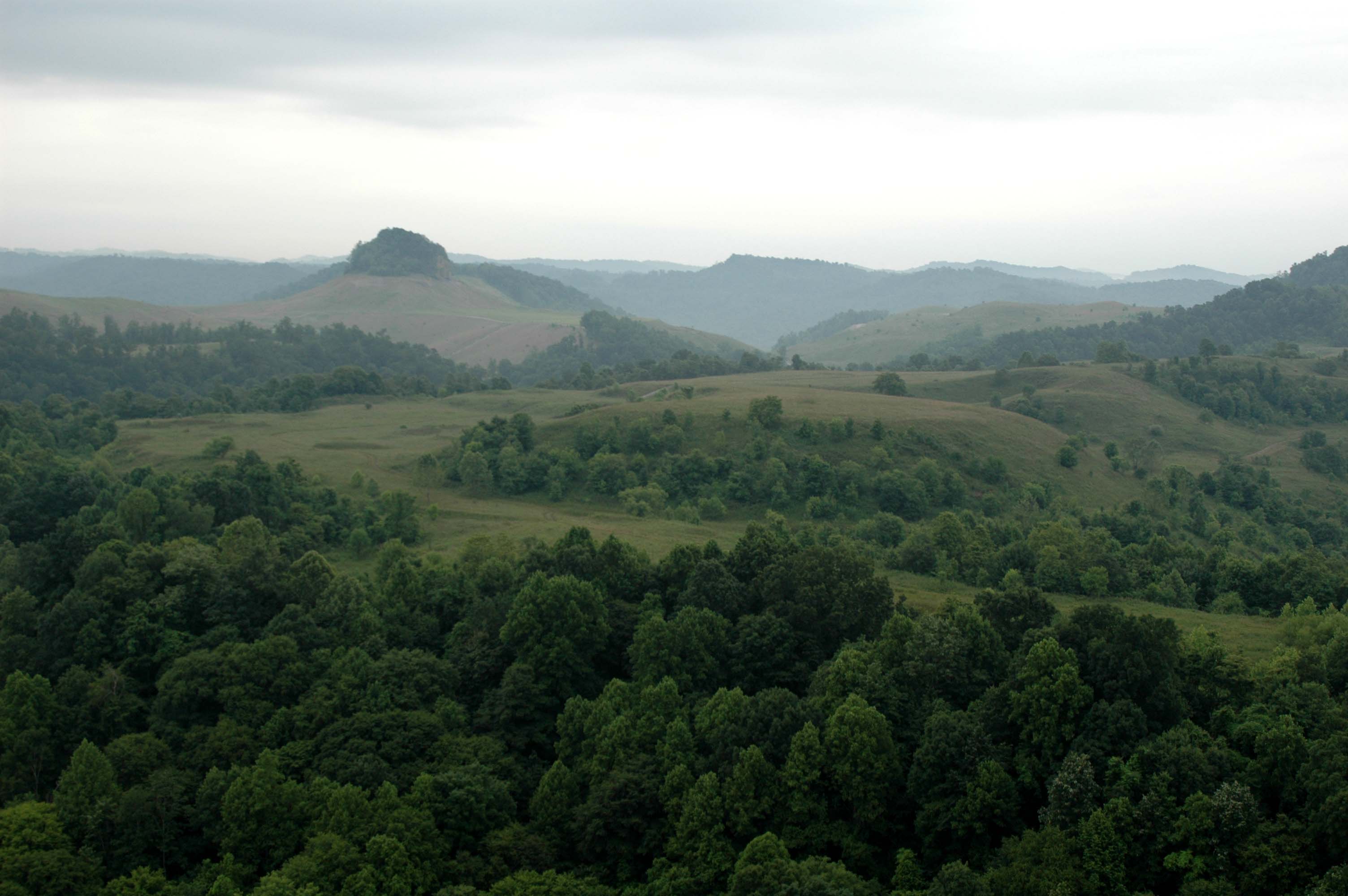Habitat
Land snails can be found around the world in most kinds of
terrestrial environments (Grzimek, 2004). With thousands of
species, each snail has adapted and found its own preferred
habitat to exist. Millerelix plicata has been found to reside in
the regions of Alabama and Indiana, but majority have been found
in the middle and eastern regions of Kentucky and Tennessee
(Pilsbry, 1940). In Kentucky and Tennessee,
the habitat of Millerelix plicata is known as the Southwestern
Appalachian ecoregion. 
This region contains the Cumberland Plateau and the Plateau Escarpment (U.S Environmental Protection Agency [EPA], 2012). These two areas consist of low hills, ridges, and valleys with mesophytic and oak forests with little pasture land(EPA, 2012) . The mesophytic forests are a trademark of the Appalachian region and can be found growing in cool and moist sides of hill slopes (EPA, 2012). Within these forests many small streams can be found that help to support a home for a variety of different species such as Millerelix plicata (EPA, 2012).
Millerelix plicata has also been found in the mid-state, Interior Plateau, region of Kentucky. The Inferior Plateau region is divided into sub-regions that vary in there morphology but contain deciduous forests with many other cool, moist areas with streams, springs, wetlands, and similar environments that many terrestrial snails thrive in (EPA, 2012). These regions are prime snail habitat due to the many types of vegetation and moist environments that the snail needs to survive. Places that snails are usually found are north facing hillsides, near bodies of water and springs, trees, rocks, and also under vegetation (Heller, 2001).
 Unfortunately, many snails, including Millerelix plicata,
are losing habitat due to mining and lumbering which has been
causing many species to be put on the endangered species list. Due
to the small range of most snails, it is important to conserve what
habitat they do have left to ensure that they will be around in the
future.
Unfortunately, many snails, including Millerelix plicata,
are losing habitat due to mining and lumbering which has been
causing many species to be put on the endangered species list. Due
to the small range of most snails, it is important to conserve what
habitat they do have left to ensure that they will be around in the
future.
Please continue onto Adaption to learn more.